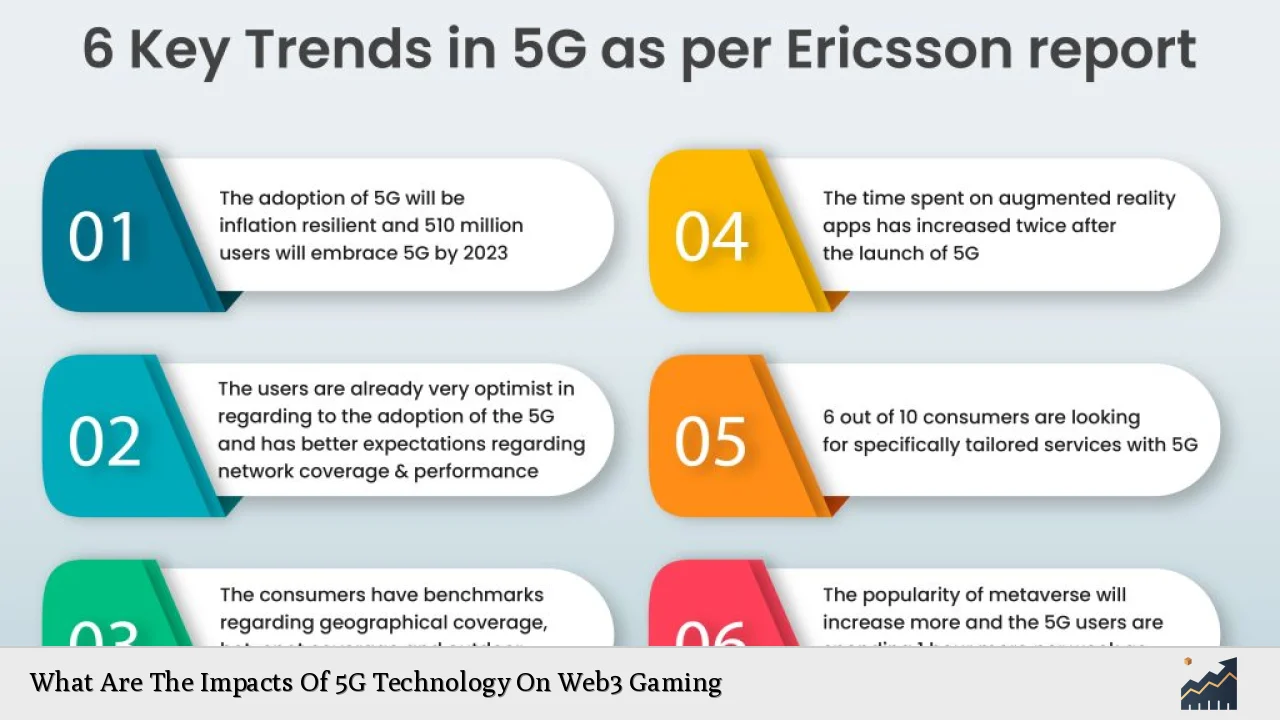The convergence of 5G technology and Web3 gaming is poised to revolutionize the gaming landscape, creating a more immersive, interconnected, and player-centric ecosystem. As 5G networks roll out globally, they promise to enhance connectivity, reduce latency, and enable high-quality streaming and real-time interactions. This transformation is particularly significant for Web3 gaming, which leverages blockchain technology to empower players with true ownership of digital assets and decentralized gaming experiences. In this article, we will explore the multifaceted impacts of 5G on Web3 gaming, focusing on market trends, implementation strategies, risk considerations, regulatory aspects, and future outlook.
| Key Concept | Description/Impact |
|---|---|
| Enhanced Connectivity | 5G provides ultra-fast download speeds (up to 20 Gbps) and low latency (as low as 1 ms), facilitating seamless gameplay and real-time interactions in Web3 games. |
| Cloud Gaming Integration | The ability to stream high-quality games without needing powerful hardware allows broader access to Web3 games, democratizing the gaming experience. |
| Decentralized Economies | Web3 enables true ownership of in-game assets through NFTs, allowing players to trade or sell items across different platforms, enhancing player engagement. |
| Real-Time Multiplayer Experiences | 5G’s low latency supports complex multiplayer interactions without lag, improving competitive gameplay and overall user satisfaction. |
| Augmented Reality (AR) and Virtual Reality (VR) | 5G enhances AR/VR experiences in gaming by providing the necessary bandwidth for immersive environments that blend digital and physical worlds. |
| Market Growth Potential | The global gaming market is projected to reach $397.21 billion by 2029, driven by innovations in mobile technology and the integration of 5G with Web3 gaming. |
Market Analysis and Trends
The global gaming market is experiencing rapid growth, with projections indicating an increase from $244.22 billion in 2024 to $397.21 billion by 2029, reflecting a compound annual growth rate (CAGR) of 10.17%. This growth is significantly influenced by the rollout of 5G technology, which enhances mobile gaming experiences through improved connectivity.
Current Trends
- Mobile Gaming Dominance: The mobile gaming segment is the fastest-growing within the industry, expected to grow at a CAGR of 11.01% between 2024 and 2029. The rise of casual gaming and hyper-casual titles is driving this trend.
- Cloud Gaming Revolution: Cloud gaming services are becoming mainstream due to the high-speed capabilities of 5G networks. Players can enjoy AAA titles without investing in expensive hardware, thus expanding the potential player base.
- Integration of Blockchain: The incorporation of blockchain technology in gaming is creating decentralized economies where players can own and trade their digital assets as non-fungible tokens (NFTs). This shift empowers players and fosters a new economic model within games.
Key Statistics
- By Q4 2023, there were approximately 1.545 billion expected 5G subscriptions in the Asia-Pacific region alone.
- The number of new blockchain games has surged significantly; APAC teams accounted for 39% of new Web3 game launches in 2024.
Implementation Strategies
To fully leverage the benefits of 5G technology in Web3 gaming, developers must adopt strategic approaches:
Development Considerations
- Utilizing Edge Computing: By processing data closer to users through edge computing enabled by 5G, developers can reduce latency further and enhance the responsiveness of decentralized applications (dApps).
- Focus on Interoperability: Creating games that allow asset transfer across different platforms will be crucial as players seek greater ownership over their digital items.
- Emphasizing User Experience: With lower barriers to entry due to cloud gaming capabilities, developers should prioritize creating engaging user experiences that capitalize on high-quality graphics and seamless gameplay.
Risk Considerations
Despite its advantages, the integration of 5G into Web3 gaming comes with certain risks:
Technical Challenges
- Infrastructure Limitations: Not all regions have robust 5G infrastructure yet; this disparity could lead to unequal access to enhanced gaming experiences.
- Cybersecurity Threats: Increased connectivity raises concerns about data security and privacy within decentralized networks.
Market Volatility
- Regulatory Uncertainty: The evolving landscape of blockchain regulations may impact game development strategies and player engagement.
Regulatory Aspects
As Web3 gaming continues to evolve alongside 5G technology, regulatory frameworks will need to adapt:
Compliance Requirements
- Data Protection Laws: Developers must ensure compliance with data protection regulations like GDPR as they collect user data for personalized experiences.
- Financial Regulations: The use of cryptocurrencies for transactions within games may attract scrutiny from financial regulators.
Future Outlook
The future of Web3 gaming powered by 5G technology looks promising:
Innovations on the Horizon
- Enhanced AR/VR Experiences: As AR/VR technologies continue to mature alongside 5G infrastructure, we can expect even more immersive gameplay that blurs the lines between digital and physical realities.
- Expansion into New Markets: With increasing smartphone penetration globally, particularly in developing regions, there is significant potential for growth in mobile Web3 gaming markets.
Long-Term Projections
The combination of blockchain technology with high-speed connectivity provided by 5G is expected to create a robust ecosystem where players have unprecedented control over their digital assets. This evolution could lead to a new era in gaming characterized by decentralized economies and enhanced player engagement.
Frequently Asked Questions About What Are The Impacts Of 5G Technology On Web3 Gaming
- How does 5G improve online multiplayer gaming?
5G reduces latency significantly compared to previous generations, allowing for smoother real-time interactions between players without lag. - What role does cloud gaming play in Web3?
Cloud gaming allows users to access high-quality games without needing expensive hardware. This democratizes access and expands the player base for Web3 games. - Are there any risks associated with using blockchain in gaming?
Yes, risks include regulatory uncertainty regarding cryptocurrencies used for transactions and potential cybersecurity threats due to increased connectivity. - What are NFTs in the context of Web3 gaming?
NFTs are unique digital assets that players can own within games. They allow for true ownership and trading across different platforms. - How can developers ensure compliance with regulations?
Developers should stay informed about data protection laws and financial regulations relevant to their operations within different jurisdictions. - What future innovations can we expect from the integration of AR/VR with 5G?
The integration promises more immersive gameplay experiences that blend real-world environments with digital elements seamlessly. - How will market trends evolve with the rise of 5G?
The market is expected to see increased participation from casual gamers due to lower barriers to entry facilitated by cloud-based solutions. - What impact will geographical disparities have on Web3 gaming?
Regions with advanced 5G infrastructure will likely experience faster adoption rates compared to areas still reliant on older technologies.
In conclusion, the intersection of 5G technology and Web3 gaming presents an array of opportunities for innovation while also posing challenges that need careful navigation. As both technologies continue to develop, they hold the potential not only to transform how games are played but also how they are conceptualized within a decentralized framework.

